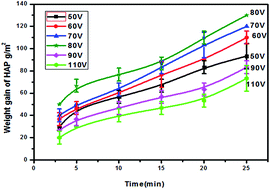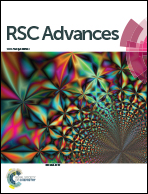Interlayer TiO2–HAP composite layer for biomedical applications
Abstract
In this paper we discuss the evaluation of a hydroxyapatite [Ca10(PO4)6(OH)2, HAP] layer developed on titanium by electrophoretic deposition (EPD) and interlayer TiO2 formation on titanium by sintering in air at 800 °C for 1 h using electrochemical impedance (EIS) and anodic polarisation studies. The composite layer (HAP–TiO2–Ti) so formed improved the corrosion resistance and the stability of the coatings. The crystallinity, phase composition of the metal surface, HAP coatings, surface morphology and surface topography were characterized by XRD, Raman, FESEM with EDAX and AFM studies respectively. EIS investigations of the composite layer showed high polarization resistance with low capacitance values over the uncoated sample. Similarly, during anodic polarization, high corrosion potential (Ecorr) and low corrosion current density (Icorr) values were obtained for composite layers in comparison with uncoated metal. The in vitro cytotoxicity studies of the coated material were carried out by MTT assay and cell attachment with osteoblast cells. These studies revealed an enhanced cell attachment and proliferation on the composite layer when compared to uncoated metal, which controlled the release of metal ions into the biological system.


 Please wait while we load your content...
Please wait while we load your content...